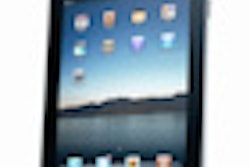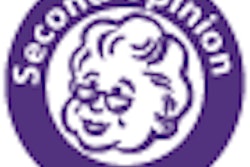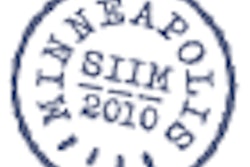GENEVA - Radiology's once-clandestine toys -- mobile phone apps, iPads, iPhones, and the like -- are beginning to assume a central role in the delivery of healthcare, according to healthcare IT expert C. Peter Waegemann at the opening session of the 2010 Computer Assisted Radiology and Surgery (CARS) meeting on Wednesday.
A whole range of mobile tools for healthcare is rising up to strike down the tyranny of the status quo. And in the process, mobile healthcare apps, systems, and devices of every flavor -- known collectively as mHealth -- are making healthcare easier and more effective for patient and provider alike, according to Waegemann, vice president of mHealth Initiative, a Boston-based nonprofit that promotes mobile computing in healthcare.
Waegemann was a founder of seminal healthcare IT conference Towards the Electronic Patient Record (TEPR) and was also CEO of the Medical Records Institute. Both ventures were shut down last year and morphed into mHealth Initiative.
Obstacles to mobile health
Certainly there are obstacles to increased adoption of mHealth devices, daunting ones at that, Waegemann said. But he believes the sheer popularity and utility of anywhere, anytime medicine makes the eventual triumph of the genre all but certain.
"The next 25 years are going to be about restructuring radiology and surgical processes, restructuring the whole healthcare approach of clinicians, and integrating new technologies," Waegemann said. "We are going through major change."
What are those changes? No. 1: Technology is moving from big to small and becoming more distributed in the process, Waegemann said.
"What I mean by big to small is from big expensive telemedicine systems to small mobile phone systems, to Internet systems, to low-cost systems," he said.
A second big trend is making information available to anyone who needs it, he said, which allows more participants in the healthcare process, including the patients themselves.
Medicine is moving from legacy systems to easy-use systems, a trend made possible with the rise in smart mobile devices. Mobile phones have been around for at least a decade now, and it's not their diminutive size that makes them incredibly useful, Waegemann said. In the past 18 months it's been about how small they are, how much they do, and how easy they are to use.
Right now, in the U.S., there are hospital systems where 80% of the nurses and physicians are connected on smart devices, Waegemann said. The devices will ultimately enable the transition from sporadic to continuous communication and, for the first time, allow consumers to do some of the work involved in their healthcare: their own registration and check-in information, reporting their symptoms, and, for the active patient, monitoring their own progress.
If travelers can check themselves in for flights and do their own online banking, patients should be able to do the same thing, Waegemann said. In other words, no patient should spend an hour in a waiting room just to report his or her symptoms to the doctor.
"Patients should send the information in advance, and the physician should look at the information and say 'before I see you, do the following tests and then come and see me,' " Waegemann said.
Legacy systems just aren't doing the job; they're big and cumbersome and exclude too many care providers, Waegemann said. That's why healthcare staff members are using mobile devices to communicate, and that's the main reason why today's "authority-centric" systems will ultimately yield to ubiquitous mobile devices.
"We have to educate people, and we have to change the healthcare communication infrastructure in many ways as those ways come along," he said.
The new patient
In this brave new mHealth world, patients will be expected and encouraged to be an active participant in the healthcare process, Waegemann said. Healthcare is transitioning from the examination and care process to the "care space," which might take place in any number of places by any number of providers.
Via the same technologies, providers are increasingly freed to bring the collective expertise of their colleagues to bear in caring for the patient collaboratively, Waegemann said. Lone practitioners become conductors and managers of a care team around a patient.
Large groups of physicians are beginning to use applications like Google Talk to collaborate on large numbers of patients, easing the way for everyone and offering better advice in the process, Waegemann said.
The use of real and virtual providers, online services, e-mail, and texting can also facilitate this kind of multiparty collaboration. Such collaboration can help ease the transition from episodic care to continual care, he said. And in the process, patient care will also become more transparent.
"We are moving toward what I would call participatory healthcare, and in the future it should be everyone from the school nurse to the chiropractor who should care for the patient and be communicating all the time," he said.
Patients should keep copies of their own personal health records (PHRs), he said. What's the use of amassing huge amounts of data in an electronic medical record (EMR) at great cost in centralized institutions when it doesn't speed up the process? There are many examples of facilities that had physicians seeing 28 patients a day before they spent millions installing EMR systems. Now those doctors are still seeing 28 patients a day, Waegemann said.
The future of the personal health record is brighter, he said. Empowered by their information, patients could use some of their healthcare resources to make necessary lifestyle changes, follow prescribed treatments, and monitor their own progress in electronic cooperation with their physicians, he said.
Recent studies indicate that 79% of Americans now use the Internet as a source of healthcare advice, Waegemann said. Another recent study found that 95% of that advice was accurate, certainly not worse than what doctors are offering. And a study by the Mayo Clinic once found that 18% of the information published in medical books was incorrect.
The lesson is that patients should be encouraged to do online research, not steered or scared away from it, Waegemann said. The major source of incorrect information on the Internet? Unsubstantiated product claims by pharmaceutical companies, Waegemann said.
A better-educated patient also allows greater patient participation in healthcare cost decisions, Waegemann said.
Greater accuracy is another distinct possibility. In Boston, some physicians are showing the patient exactly what is going into the medical record. So far, from the patient's point of view, there has been something that needed correcting in one of every two reports, he said.
"Radiologists should become active team members who discuss a case with colleagues," Waegemann said. "Radiology reports should not be the primary communication tool. Active, timely communication should replace in many ways what we have done in the past."
For their part, patients certainly don't mind interacting with electronic devices, Waegemann said. A study presented in May at the Pediatric Academic Societies meeting in Vancouver found that 90% of patients want to be contacted by e-mail. In his facility, younger patients who have been in the hospital like to be texted and asked "how r u?" Waegemann said. "If they don't feel well they just might text back and say they need some time and want to make an appointment," he said.
The virtual visit
Waegemann said his research shows that about 1.6 million people are currently receiving virtual healthcare "where there's no doctor, there's no nurse," and connectivity is their only direct cost, he said. In Africa, surgery performed by inexperienced healthcare workers who received only text messages from the surgeon thousands of miles away has saved patients' lives, he said.
A tsunamilike wave of electronic devices and applications is washing over the world, and the pace of development continues to grow, he said. Some 5,000 mHealth communications applications are now available for various devices, ranging from the BlackBerry to the iPad, he said; 1,000 of these apps are aimed at consumers.
"Doctors and nurses are using these devices, and they're using them independently of the hospital information system," he said. "We have at this point six hospitals in North America where they have given every doctor and every nurse an iPhone," he said.
Medical information technology is now well into the third generation, he said. The first generation was connected; the second was wireless. The third generation is much more than the sum of the first two. Enabled by all of the new devices, the new paradigm is based on semantic Web, semantic health, Wikihealth, and participatory health.
This vision provides for new media and patterns of care; it involves transferring the body of scientific knowledge into manageable applications in the hands of the provider, and providing new tools for the collaboration of healthcare and wellness providers. It must use these tools to "create interoperability where legacy systems couldn't," Waegemann said.
While supporting real and virtual healthcare encounters, new systems will also provide point-of-care documentation systems, he said. They will use RFID (radiofrequency identification) and related technologies to provide asset management, patient flow, and other applications. On the patient side, these tools will integrate online health information to empower the patient to participate in his or her own care plan, Waegemann said.
Physicians are already using a wide variety of clinical applications, including online from drug databases to medical calculators and decision-support applications, he said.
In San Diego, paramedics have PDAs, and they're collecting and sending information about their emergent-care patients to the hospital during the ambulance ride, Waegemann said. This is saving $2.5 million a year, because administrative details can be done before the patient arrives, and the patient can be triaged and prepared in advance.
"Instead of going to school and learning the scientific body of medicine and storing it between our ears, what we see is that a good part of the body of scientific knowledge can be transferred in a variety of applications, which we will have at the point of care and which will help us decide what is going to be done with the patient," he said.
Increasing remote and virtual care encounters means that two doctors or two radiologists collaborating on a case may be halfway around the world from each other.
Who will pay for all this collaboration? Some patient encounters will be paid, and others won't, Waegemann said. In fact, myriad complications loom, from the need for a new payment system structure to differing medical standards to a thorny legal environment, he said.
"Fee for service doesn't really work" in an environment where you want less traditional care and lower costs, he said. And whatever will be done to help ensure that all the information being bandied about is correct? There are many good questions researchers are addressing, but many more good answers will be needed, he said.
The shift to smaller applications occurs in the context of the realization that the centralized EMR is of limited utility; experts are increasingly turning their attention toward smaller apps, or "meaningful use" of the EMR, he said.
The massive shift in healthcare will occur, even if it takes 30 years to implement fully, Waegemann said. So it's probably best to get started solving the problems now, he said.
By Eric Barnes
AuntMinnie.com staff writer
June 24, 2010
Related Reading
Is the iPad radiology's dream device for mobile healthcare? June 24, 2010
ACR offers imaging appropriateness app, April 14, 2010
FDA action may rain on iPhone's medical imaging parade, March 23, 2010
Handheld devices show promise in emergency radiology, January 21, 2010
CT scans sent to iPhone can make appendicitis diagnoses, December 2, 2009
Copyright © 2010 AuntMinnie.com


















